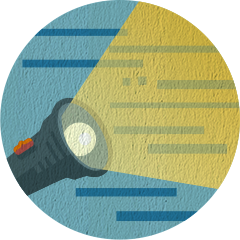Live satellite view of earth, the sun, the moon...
-
Are there any public views of real-time / live views from objects in space, especially ones that are pointed at the Sun, Moon, Mars, Jupiter, Saturn? So far I've found:http://earthnow.usgs.gov/http://www.givetheworld.com/aboutEchoStar11.asphttp://www.g4ilo.com/wxsats.htmlBut are there any public views of satellites pointing "out" rather and "in"? Doesn't have to be accessible via web.
-
Answer:
http://stereo.gsfc.nasa.gov/ and http://sohowww.nascom.nasa.gov/data/realtime-images.html both point at the sun and the images are updated quite frequently. I can't think of any other satellites that point at non-Earth objects continuously. Satellites are expensive; and it's hard to justify looking at Saturn 100% of the time.
wcfields at Ask.Metafilter.Com Visit the source
Other answers
And I know I can always buy a computer controlled telescope and view these objects as they pass by, but what would be better is if some scientific telescope or space-satellite were viewing them that I could receive.
wcfields
Hmm, too late for today, but the http://airandspace.si.edu/exhibitions/popobservatory.cfm that live streams from noon to 3:00.
JoanArkham
They're not operating yet, but in a little while Planetary Resources is planning on launching a whole swarm of tiny telescopes to look at asteroids and other things. "The ARKYD is a technologically advanced, orbiting space telescope that will be controlled by YOU, the crowd, through your pledges and community involvement! You can even direct your telescope time to non-profit science centers and universities for use in your communities!" I will cost you $200 on the kickstarter for you to take a pic of whatever you like, but I guess they'll end up being more accessible as time goes by. That said, I guess they're not real time.
Just this guy, y'know
Realtime is a challenge for astronomy because of the necessary practices and complex telescope imagers. Telescopes were among the cutting edge users of CCDs (microchips that capture light in an array of pixels), a technology that is now in your mobile phone. But dedicated telescope technologies (CCDs are probably not the latest) are built for accuracy and rigor at the expense of speed-- both in calibrating and later , and so they are not meant to produce anything like realtime images. Taking a picture in deep space, let's say it requires exposing the imager to light for 1 hour (to produce a single image!) means exposing the imager. They also collect buckets and buckets of data to be processed later-- this workflow is encouraged by the telescope time-sharing practice: capture now, process later. Capture for a week, process data for months. The hypothetical instrument that would look at Jupiter all the time doesn't (yet) exist, I think, because A) Jupiter is often not visible, such as the ~half of the year when Jupiter on the same side of the earth as the sun B) such an instrument would or should be completely automated and weather sensitive, or placed in space where there is no atmospheric weather (pricy!) and C) seeing Jupiter from Earth's surface is of comparatively limited value to astronomers who benefit from spaceprobes, so the demand would have to come from the potential viewers outside the astronomy community. The Sun is a better bet: The SOHO (orbiting the sun currently) and the IRIS (launching this month!) satellites are studying the sun constantly (because it never sets up there) and SOHO sends out pictures daily. There's even an iPad app from the Solar/Heliospheric division of NASA. Ah, linked above, I see.
Sunburnt
In most cases, continuous realtime coverage is impossible because the satellite must be in some kind of orbit. SOHO can continuously image the Sun because it's in Earth's Lagrange 1 point and always stays between Earth and the Sun. The trick here is that the Earth is rotating beneath it, so a single ground station won't work to talk to it. NASA has the "Deep Space Tracking Network" of antennas around the world, so there's always one that SOHO can talk to. STEREO can do it most of the time because the satellites are in orbit around the Sun, not around the Earth, but there are times when we can't receive signal from them because the Sun is in the way.
Chocolate Pickle
This is really sad. I was going to be all smart and admittedly post links to earth based scopes, but that are always available, such as cosmic ray detectors and radio telescopes (usually focused on Jupiter or the sun). But I swear, every one I try has a website from the late 1990s and any live feeds seem to be down. It's like it all died at the same time. Hoping my internet connection is just wonky. I saw a massive network somewhere in South America at Fermilab two or three years ago, so when cosmic rays hit at the right angle you'd see this huge streak across the detectors. It was cool. I'm surprised there isn't a stream of it...
jwells
http://ask.metafilter.com/242322/Live-satellite-view-of-earth-the-sun-the-moon#3517124: "http://stereo.gsfc.nasa.gov/ and http://sohowww.nascom.nasa.gov/data/realtime-images.html both point at the sun and the images are updated quite frequently. ..." This is exactly the kind of thing I was looking for. Aren't there any active Seismometer on the moon? From what I can tell they were turned off in 1977. It seems like it would be useful to have some sort of seismometer to detect impacts on the dark-side.
wcfields
http://www.thehindu.com/todays-paper/tp-national/india-plans-to-send-seismometer-to-study-moonquakes/article4761220.ece. I would imagine that the power has failed by now on the ones put up there by Apollo. Even http://en.wikipedia.org/wiki/Radioisotope_thermoelectric_generators will have had their generation capacity substantially reduced after 45 years.
Chocolate Pickle
Related Q & A:
- Is there a free website for live satellite feeds?Best solution by Yahoo! Answers
- How often are Google Earth Satellite images updated?Best solution by support.google.com
- What are some common features of the Moon and Earth?Best solution by Yahoo! Answers
- How are earth and the moon alike?Best solution by wiki.answers.com
- CAN YOU PLAY XBOX LIVE ON SATELLITE INTERNET?Best solution by Answerbag.com
Just Added Q & A:
- How many active mobile subscribers are there in China?Best solution by Quora
- How to find the right vacation?Best solution by bookit.com
- How To Make Your Own Primer?Best solution by thekrazycouponlady.com
- How do you get the domain & range?Best solution by ChaCha
- How do you open pop up blockers?Best solution by Yahoo! Answers
For every problem there is a solution! Proved by Solucija.
-
Got an issue and looking for advice?

-
Ask Solucija to search every corner of the Web for help.

-
Get workable solutions and helpful tips in a moment.

Just ask Solucija about an issue you face and immediately get a list of ready solutions, answers and tips from other Internet users. We always provide the most suitable and complete answer to your question at the top, along with a few good alternatives below.